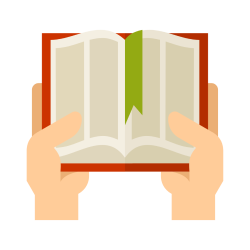
Additional Punctuation
Additional Punctuation
| EXAMPLE |
|---|
| Can + not = can't |
| Will + not = won't |
| I + have = I've |
| They + are = they're |
| It + is (or It + has) = it's |
| of the clock = o'clock |
| running = runnin' |
| 1993 = '93 |
| EXAMPLE |
|---|
| The bone of the
dog = the dog's bone |
| The house of
Jonas = Jonas's house |
| The cries of the
children = the children's cries |
| The trails of
the jets = the jets' trails |
| The papers of everyone = everyone's papers |
| EXAMPLE |
|---|
| The backpack of the boy = his backpack |
| Letters and Numbers |
|---|
| "Mind your
p's and q's" is now "Mind your
p's and
q's." (Notice how the apostrophe and the s are not italicized.) |
| "Two A's" is now "two As." |
| 1940's is now 1940s. |
| Words as Words | |
|---|---|
| Older style: | Check the there's in your essay and make sure they shouldn't be their's |
| Modern style: | Check the
there's in your essay and make sure they
shouldn't be their's. |
| EXAMPLE |
|---|
| I brought my umbrella, but I left it in the car. |
| I brought my umbrella; I left it in the car. |
One way to fix a comma splice is to replace the comma with a semicolon. However, it's best to use semicolons sparingly. Often it's better to use either a comma plus a conjunction or just a period.
Doing so helps avoid confusion. Just remember to remove the conjunction, unless it's a transitional conjunction (you'll learn about how to use those in the next section).
| Comma + conjunction |
|---|
|
|
| Semicolon with no conjunction |
|---|
| My cousin, who recently moved to London, England, just had a baby; I hope to go visit her sometime this summer. |
Usually the first independent clause ends with a period, and the next clause starts with a transition plus a comma. Sometimes you can use a semicolon instead of a period if you want to show a closer link between the two clauses. If you choose to use a semicolon, the first letter of the transitional expression will be lowercase.
| EXAMPLE |
|---|
| I have always liked bats. In fact, they are my favorite animals. |
| I have always liked bats; in fact, they are my favorite animals. |
| Series with commas |
|---|
| I bought a scarf in Paris, cheese in Cheddar, a painting in Toledo, and a pair of earrings in Munich. |
| Series with semicolons |
|---|
| I bought a scarf in Paris, France; cheese in Cheddar, England; a painting in Toledo, Spain; and a pair of earrings in Munich, Germany. |
The statement that precedes a colon is always an independent clause, but what follows the colon can be either a dependent or independent clause. (This is in stark contrast to the semicolon, which always connects two independent clauses.)
| EXAMPLE |
|---|
| Please buy these items: a screwdriver, a hammer, a measuring tape, and some nails. |
| Please proofread for the following: periods, commas, and colons. |
| EXAMPLE |
|---|
| When you leave, don't forget to bring home your shoes, bathing suit, and towel. |
| These stickers are for those who got As, those who did extra credit, and those who turned their projects in early. |
| EXAMPLE |
|---|
| Red, blue, and white: the decorations for the party were very patriotic. |
| EXAMPLE |
|---|
| I only like two flavors of ice cream: chocolate and vanilla. |
| We visited a famous World Heritage Site: Stonehenge. |
| EXAMPLE |
|---|
| Whenever we helped my mother in the kitchen, she always quoted her grandmother's favorite aphorism: "Many hands make light work." |
| The coach's words stayed with his team: "I just want you to play your best." |
| EXAMPLE |
|---|
| I got rained on the entire walk: I am soaked. |
| This is what I wrote on the board: Homework due tomorrow! |
| EXAMPLE |
|---|
| Dear
Sir or Madam: I would like to address a recent issue with your company … |
| EXAMPLE |
|---|
| MACI: I missed the party because I was sick. |
| JACKIE: I'm sorry to hear that. You missed a great party! |
| Between hours and minutes in time |
|---|
| We will leave at 5:30 this evening. |
| Between numbers to show ratios or proportions |
|---|
| The best proportion of students to teachers is 20:1. |
| Between titles and subtitles of works |
|---|
| My favorite television show then was Star Trek: The Next Generation. |
| Between city and publisher in bibliographic entries |
|---|
| New York: Best Books, 2012 |
| Between chapter and verse in biblical references |
|---|
| Grandma always quoted John 3:16. |
| Some style manuals
recommend a period instead. Grandma always quoted John 3.16. |
| After warnings |
|---|
| Caution: Slippery when wet |
| Note: Use colons correctly |
| Warning: Poison |
| In memos |
|---|
| To: My Boss |
| From: Me |